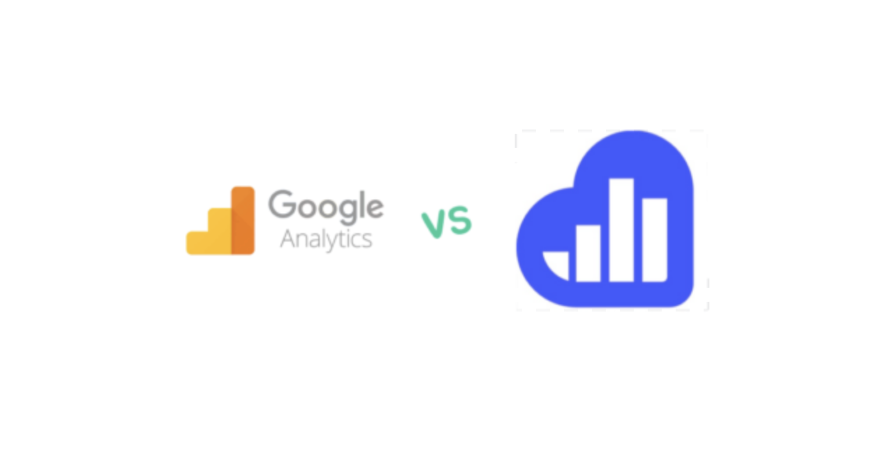Powerful Behavioral Segmentation Methods to Understand

Whether we all like to admit it or not, our habits, emotions, and even our backgrounds play a large part in predicting our behavior.
Many individuals have daily habits that compel them to do the same thing day in and day out. If you’re a caffeine drinker, for example, you know firsthand the impulse and daily requisite of having that morning cup.
In marketing, we want to understand who our metaphorical daily coffee drinkers are, and separate them from those who consume less regularly.
Behavioral segmentation isn’t only about recognizing that people have different habits — it’s about optimizing marketing campaigns to match these unique behavioral patterns with a particular and eye-catching message.
But what exactly is behavioral segmentation?
What is a Behavioral Segmentation Method?
In a nutshell, behavioral segmentation is a form of marketing segmentation that divides individuals into various groups who have a specific behavioral pattern in common. Consumers may share the very same lifecycle stage, previously purchased particular services or products, or even have similar reactions or attitudes to your messages.
The objective is to identify customer segments to help you understand how to address the particular needs of a target audience, discover opportunities to optimize their customer journeys, and quantify their potential value to your business.
Once users are identified by their specific behavior, you can target messages and campaigns specifically tailored to these audiences.
A few of the top benefits of behavioral segmentation include:
- Personalization: Behavioral segmentation helps you to better understand what channels your customers and potential customers frequently visit and what type of messaging they respond to most so you can increase the number of conversions.
- Saves money: Behavioral segmentation helps prioritize marketing campaigns to help make your advertising efforts more cost-effective. It allows you to spend less of your time and fewer resources to generate leads in an attempt to communicate with an audience that’s not interested.
- Makes it much easier to track success: You can easily track metrics inside each segment with an analytics tool like Kissmetrics to improve your results.
- Forecasting: Looking at each segment’s patterns, you can identify trends to help you effectively plan marketing strategies for the future.
Let’s take a look at some powerful methods of behavioral segmentation that you can use in your own business:
#1: Purchase and Usage Behavior
Purchase and usage behavior — or purchasing habits — refers to how customers approach the buying process.
While there are many different ways we can classify purchasing habits, there are primarily four types of buying behavior:
- Complex: When a consumer is actively shopping and searching for the best solution to their problem.
- Variety Seeking: When a consumer is satisfied with their brand and purchase but are open to other options.
- Dissonance Reducing: When a consumer is satisfied with their purchase and despite some anxious feeling about making a change, think there is something a little better out there.
- Habitual: When a consumer is loyal to their brand and isn’t considering other options.
Purchasing behavior can help us to understand many things, such as the complexity and difficulty of the buying process, the role the customer plays in the buying process, as well as which behaviors are most and least predictive of a consumer making a purchase.
#2: Benefits Sought
Benefits sought refers to consumers picking products based on the features and solutions that are most significant to them. You can see which benefits are significant to consumers by simply viewing the types of products and services they choose.
For instance, if customers consistently pick a low-cost option of a product or service, you might conclude that the price is important to them. If customers are engaged with a webinar about how a product or service can save them time but aren’t interested in a webinar about how the same exact product or service can help them improve performance, you could reason that saving time and workflow efficiency are more important to them.
#3: Occasion and Timing
Some occasions are universal, like booking a suite for New Year’s Eve. Others are personal, like buying a monthly makeup subscription box.
Occasion-based segmentation is more common than you may think. Take a look at some of the emails you’ve received in the past week. Chances are, you’ll see quite a few “occasional” emails from marketers. For instance, you might see that your beloved pizza delivery service sends out coupons or flash sale emails on Thursdays because people are more likely to order takeout over the weekends.
#4: Customer Loyalty
Keep in mind that just because a customer keeps purchasing your product or service doesn’t mean that they are a loyal customer. Customers that are constantly in need of the product or service you offer are habitual buyers, whereas loyal customers purchase only your products and services. This is a significant barrier to your competition.
Loyal customers are important because they tend to generate most of your business revenue and are, generally, are less expensive to market to. As a result, it’s crucial to be able to identify who your loyal customers are from your regular customers. That way, you can focus your energy on building your relationship with them.
#5: Engagement Level
Customer engagement is a valuable metric in both pre-and-post-purchase realms of the customer journey. To give you a quick example, you can use engagement-based segmentation to discover how engaged different consumers are in your pre-purchase funnel or how active existing customers are in your user community.
If a customer has a great experience with your brand, and as a result, is willing to interact more frequently and spend a little more time engaging with your company, this is usually a good sign of positive outcomes to follow.
The more a customer spends engaging with your brand, the more likely:
- A positive perception of the business’ brand is developing.
- Trust is increasing.
- They’re considering making a purchase.
- Their brand relationship is strengthening.
#6: Customer Satisfaction
Are you accurately capturing how satisfied and happy your customers are at every stage of their buying journey? Doing this will give you a much better gauge of their behaviors and will help you increase conversion rate.
Some brands make effective use of their social media channels as a customer support platform. They infuse their unique personality into each answer while also obtaining data on brand satisfaction, brand perception, and more. Others use CRM platforms or chat-based tech to create a real-time, always-open line of communication with their customers.
By first segmenting your customers by satisfaction, you can decide on the best set of actions for each segment and then prioritize them by their potential impact on your business.
#7: Customer Status
Customer status, or user status, is another great way to behaviorally classify different customers by their unique relationship to your business.
Below are a handful of the most common customer status examples:
- Prospects
- Non-users
- Regular users
- First-time buyers
- Defectors (i.e., ex-customers who have switched to a competitor)
Besides the ones listed above, there are many other customer statuses that could be applicable to your product or service. For instance, a brand with a free-trial model might have a status for “free trial” users.
The Takeaway
Behavioral segmentation is an effective method for segmenting your customers by their behavior, so you can understand them better and engage with them in a more optimal way along their customer journeys.
Using the powerful behavioral segmentation methods listed above, you can maximize your ROI, enable customers to reach their unique goals, and increase customer lifetime value. You’ll be well-positioned to build a deeper knowledge of your customer base.
You might be asking yourself what kind of tool you can use to gather and analyze behavioral segmentation data. Kissmetrics has you covered.
Kissmetric provides advanced product and marketing analytics that can help you to get more customers, make smarter decisions, and generate more customer revenue. Don’t waste your time measuring data that won’t get you results — Kissmetrics helps you focus on the things that matter and the things that grow your business, like conversions, revenue, and, most importantly, people.
Schedule a demo with us today and see how behavioral segmentation can help you.
Sources:
https://www.healthline.com/nutrition/what-is-caffeine
https://www.businessnewsdaily.com/4659-what-is-roi.html
https://marketbusinessnews.com/financial-glossary/habit-buying/

